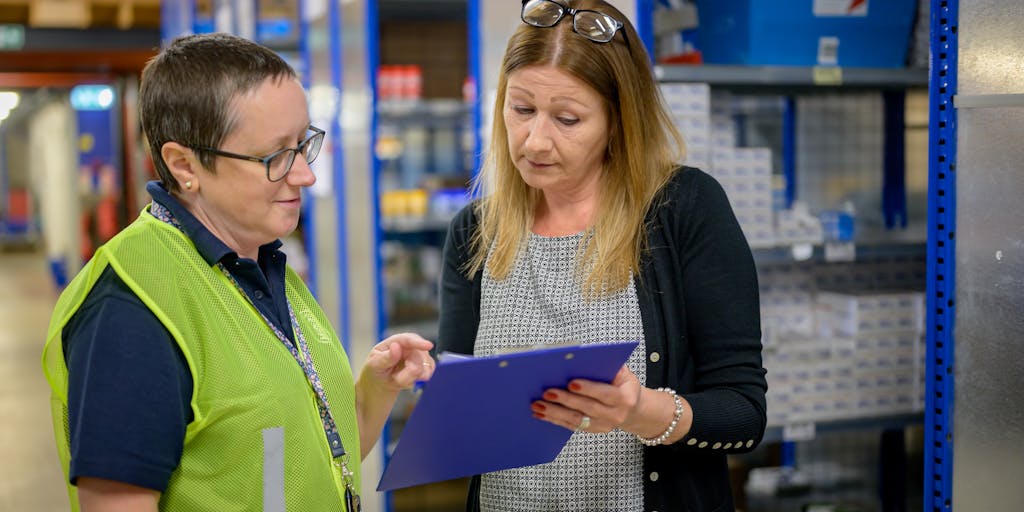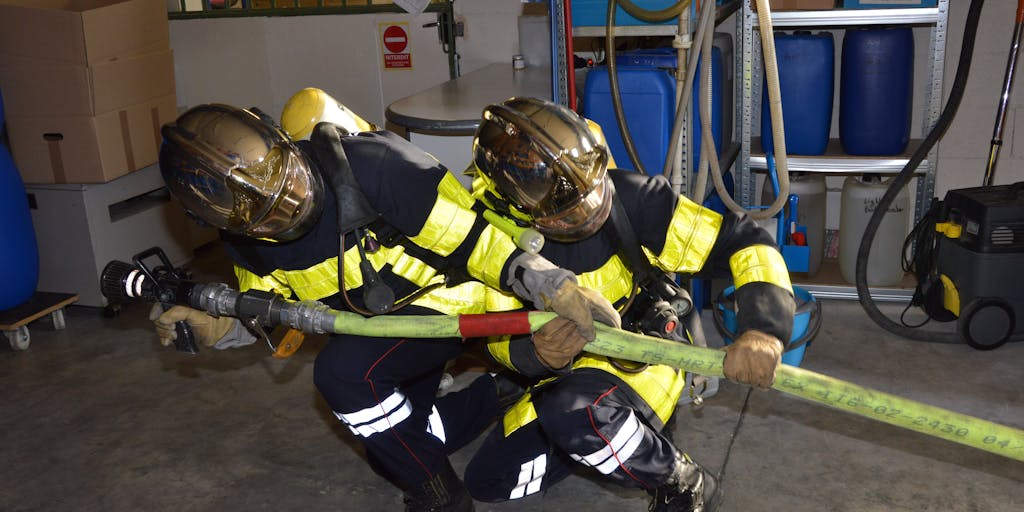The Truth About Avoiding Child Support

When we think about child support, it often conjures up images of courtroom battles and financial strain. But what if I told you that avoiding child support isn’t just about dodging payments? It’s a complex issue that intertwines legal obligations, emotional responsibilities, and the well-being of children. So, let’s dive into the truth about avoiding child support and what it really means for you and your family.
First, it’s essential to understand that child support is not merely a financial transaction; it’s a commitment to ensuring that children receive the care and resources they need to thrive. According to the U.S. Census Bureau, in 2020, about 19.6 million children lived in homes without their biological fathers, highlighting the importance of these financial contributions. So, when we talk about avoiding child support, we must consider the implications of such actions on the children involved.
Many people believe that they can simply refuse to pay or hide their income to avoid child support obligations. However, this approach can lead to severe legal consequences, including wage garnishment, tax refund interception, and even jail time in extreme cases. Instead of avoidance, it’s often more beneficial to seek legal advice or negotiate a fair arrangement that considers your financial situation while still supporting your child.
The Current State Of Child Support
Understanding the current state of child support is crucial for anyone navigating this landscape. Child support laws vary significantly from state to state, but the overarching goal remains the same: to ensure that children receive adequate financial support from both parents. In recent years, there has been a push for reforms aimed at making child support systems more equitable and reflective of modern family dynamics.
For instance, many states are now considering the income of both parents more holistically, taking into account factors like health care costs, child care expenses, and even the time each parent spends with the child. This shift acknowledges that child support is not just about money; it’s about the overall well-being of the child.
Moreover, studies show that when parents are actively involved in their children’s lives, the need for child support can sometimes be mitigated. A report from the National Fatherhood Initiative found that children with involved fathers are more likely to succeed academically and socially. This insight leads us to a critical question: how can we foster better co-parenting relationships that prioritize the child’s needs over financial disputes?
In conclusion, while the idea of avoiding child support may seem appealing to some, it’s essential to recognize the broader implications of such actions. Instead of focusing on avoidance, let’s explore ways to engage in constructive dialogue and find solutions that benefit everyone involved, especially the children. After all, they are the ones who truly matter in this equation.
Child Support & Custody Arrangements
Have you ever found yourself wondering how child support and custody arrangements intertwine? It’s a complex dance that many parents navigate, often filled with emotional highs and lows. Understanding this relationship is crucial, especially if you’re looking to manage your financial responsibilities effectively.
When parents separate, the court typically determines custody arrangements based on the best interests of the child. This can lead to one parent being designated as the primary caregiver, while the other may be required to pay child support. According to the U.S. Census Bureau, in 2020, about 19.6 million children lived with one parent and no other adult, highlighting the prevalence of single-parent households.
Consider the story of Sarah and Tom. After their divorce, Sarah was awarded primary custody of their two children. Tom, who had a fluctuating income as a freelance graphic designer, found himself struggling to meet the child support payments set by the court. This situation is not uncommon; many parents face challenges in balancing their financial obligations with their ability to pay.
Experts suggest that open communication between parents can help alleviate some of the stress associated with child support. For instance, if Tom had approached Sarah to discuss his financial situation, they might have reached a more manageable agreement. Mediation can also be a valuable tool, allowing both parties to negotiate terms that reflect their current realities.
Ultimately, understanding how custody arrangements impact child support can empower you to make informed decisions. It’s not just about the money; it’s about ensuring that your child’s needs are met while also considering your financial well-being.
Financial Implications & Trends
Let’s dive into the financial implications of child support. It’s a topic that can feel overwhelming, but breaking it down can make it more digestible. Did you know that the average monthly child support payment in the U.S. is around $430? This figure can vary significantly based on income, the number of children, and specific state laws.
As we look at trends, it’s essential to recognize that child support payments are often tied to the non-custodial parent’s income. A study by the Office of Child Support Enforcement found that nearly 70% of parents who owe child support are employed, yet many still struggle to make payments due to rising living costs. This reality can lead to a cycle of debt and stress.
Take the example of Mark, a father who lost his job during the pandemic. Despite his best efforts to find new work, he fell behind on his child support payments. This situation is not unique; many parents face similar challenges, especially during economic downturns. The good news is that courts often allow for modifications to child support orders based on changes in financial circumstances. If you find yourself in a similar situation, it’s crucial to document your financial changes and communicate with the court.
Moreover, understanding the financial implications of child support can help you plan better. Setting up a budget that accounts for these payments can alleviate some of the stress. It’s about creating a financial roadmap that considers both your obligations and your needs.
Legal & Enforcement Challenges
Now, let’s talk about the legal and enforcement challenges surrounding child support. It’s a topic that can feel daunting, but knowing your rights and responsibilities can empower you. Did you know that in 2020, approximately 30% of child support payments were not made in full or on time? This statistic underscores the challenges many parents face.
One of the most significant hurdles is enforcement. If a parent fails to pay child support, the custodial parent can seek legal recourse. However, the process can be lengthy and complicated. For instance, if Lisa, a single mother, struggles to receive payments from her ex-husband, she may need to file a motion with the court. This can involve additional legal fees and emotional stress.
Experts recommend staying informed about your state’s child support laws. Each state has its own enforcement mechanisms, which can include wage garnishment, tax refund interception, and even license suspensions for non-payment. Understanding these options can help you navigate the system more effectively.
Additionally, consider the emotional toll that legal battles can take. It’s essential to approach these situations with a mindset focused on resolution rather than conflict. Seeking mediation or legal advice can often lead to more amicable solutions that benefit everyone involved, especially the children.
In conclusion, while the journey through child support can be fraught with challenges, understanding the intricacies of custody arrangements, financial implications, and legal enforcement can empower you to make informed decisions. Remember, you’re not alone in this; many parents are navigating similar waters, and there are resources available to help you along the way.
Terminating Child Support in New York

Have you ever found yourself wondering if there’s a way to terminate child support obligations? It’s a question that many parents grapple with, especially when circumstances change. In New York, the process isn’t as straightforward as one might hope, but understanding the nuances can empower you to navigate this complex landscape.
In New York, child support is typically mandated until the child turns 21, but there are specific circumstances under which you can seek to terminate these payments. For instance, if the child becomes emancipated—meaning they are financially independent, married, or in the military—you may have grounds to stop payments. However, it’s essential to document this change thoroughly. A simple verbal agreement or assumption won’t suffice; you’ll need to present evidence in court.
Another scenario that might allow for termination is a significant change in your financial situation. If you lose your job or face a substantial decrease in income, you can petition the court for a modification of your child support order. According to a study by the American Academy of Matrimonial Lawyers, nearly 70% of child support modifications are due to changes in the payer’s financial circumstances. This statistic highlights the importance of being proactive and communicating with the court.
It’s also worth noting that if the custodial parent is not using the support for the child’s benefit, you might have a case for termination. However, proving this can be challenging and often requires legal assistance. Consulting with a family law attorney can provide clarity and guidance tailored to your situation.
Using Custody To Avoid Child Support: It’s Not That Simple

Many parents believe that gaining custody of their child will automatically exempt them from child support obligations. While it’s a common misconception, the reality is much more nuanced. Have you ever thought about how custody arrangements impact financial responsibilities? Let’s explore this together.
When custody is awarded, the court typically assesses the financial needs of the child and the income of both parents. Even if you have primary custody, you may still be required to pay child support, especially if the other parent has a significantly higher income. The New York Child Support Standards Act outlines a formula that considers both parents’ incomes and the needs of the child, ensuring that support is fair and equitable.
For example, let’s say you have primary custody of your child, but your ex-partner earns substantially more than you do. In this case, the court may still require you to pay child support to help maintain the child’s standard of living. It’s a delicate balance, and the court’s primary focus is always the best interest of the child.
Moreover, if you’re considering using custody as a means to avoid child support, it’s crucial to understand that the court will scrutinize your motives. Courts are increasingly aware of attempts to manipulate custody arrangements for financial gain, and they take such matters seriously. Engaging in this kind of strategy could backfire, leading to legal repercussions and strained relationships.
You may still have to pay support
It’s essential to recognize that even if you secure custody, child support obligations may still apply. This reality can be disheartening, especially if you were hoping for a financial reprieve. But understanding the legal framework can help you make informed decisions moving forward.
Consider this: a friend of mine, who recently gained primary custody of his two children, was surprised to learn that he still had to pay child support to his ex-wife. Despite his new role as the primary caregiver, the court determined that his ex-partner’s income was still a factor in the overall support equation. This experience taught him that custody and financial obligations are intertwined in ways that aren’t always apparent.
In conclusion, while the desire to avoid child support is understandable, it’s crucial to approach the situation with a clear understanding of the law. Seeking legal advice and being transparent with the court can help you navigate these waters more effectively. Remember, the ultimate goal is to ensure the well-being of your child, and that often requires a collaborative approach between both parents.
Other ways to reduce your support payment
When it comes to child support, many parents find themselves navigating a complex emotional and financial landscape. If you’re feeling overwhelmed by your current obligations, you might be wondering: are there ways to reduce your support payment without compromising your relationship with your child? The good news is that there are several avenues you can explore.
First, it’s essential to understand that child support is not a one-size-fits-all arrangement. Each situation is unique, and various factors can influence the amount you’re required to pay. For instance, changes in your financial circumstances, such as job loss or a significant decrease in income, can warrant a reassessment of your support obligations.
Here are some effective strategies to consider:
- Document Changes in Financial Status: If you’ve experienced a job loss or a reduction in hours, gather documentation such as pay stubs, termination letters, or tax returns. This evidence can be crucial when discussing modifications.
- Consider Shared Parenting Arrangements: If you and the other parent can agree on a more balanced custody arrangement, this can lead to a reduction in support payments. Courts often take into account the amount of time each parent spends with the child when determining support obligations.
- Explore Tax Deductions: Depending on your situation, you may be eligible for tax deductions related to child support. For example, if you’re the custodial parent, you might be able to claim certain expenses that can alleviate your financial burden.
By exploring these options, you can take proactive steps toward managing your child support payments while still prioritizing your child’s well-being.
Explain your situation to the other parent
Communication is key in any co-parenting relationship, and it’s especially vital when discussing financial matters like child support. Have you ever found yourself hesitating to bring up sensitive topics with your ex? You’re not alone. Many parents fear that discussing financial difficulties might lead to conflict or misunderstandings. However, approaching the conversation with honesty and empathy can pave the way for a more amicable solution.
Start by scheduling a time to talk when both of you can focus without distractions. You might say something like, “I’d like to discuss our current child support arrangement. I’ve been facing some challenges lately, and I think it’s important we talk about it.” This sets a collaborative tone and shows that you value their input.
When explaining your situation, be clear and concise. Share specific details about your financial changes, whether it’s a job loss, increased expenses, or other factors affecting your ability to pay. Remember, the goal is to foster understanding, not to place blame. You might even consider sharing how these changes impact your ability to provide for your child, emphasizing that your ultimate goal is their well-being.
By opening up this dialogue, you may find that the other parent is more understanding than you anticipated. They might even be willing to negotiate a temporary reduction in payments or explore other arrangements that benefit both parties.
Ask for a support modification
If discussions with the other parent don’t lead to a satisfactory resolution, you may need to formally request a modification of your child support order. This process can seem daunting, but it’s a legitimate option when your financial circumstances change significantly.
To initiate a modification, you’ll typically need to file a petition with the court that issued the original support order. It’s essential to provide evidence of your changed circumstances, such as:
- Proof of income changes (e.g., pay stubs, tax returns)
- Documentation of increased expenses (e.g., medical bills, housing costs)
- Any other relevant financial information that supports your case
Many courts require a substantial change in circumstances to grant a modification, so be prepared to demonstrate how your situation has evolved. It’s also wise to consult with a family law attorney who can guide you through the process and help you understand your rights and responsibilities.
Remember, seeking a modification isn’t about shirking your responsibilities; it’s about ensuring that your support payments are fair and reflective of your current situation. By taking this step, you’re advocating for yourself while still prioritizing your child’s needs.
Contact your local child support agency
Have you ever felt overwhelmed by the complexities of child support? You’re not alone. Many parents find themselves navigating a maze of regulations and requirements. One of the first steps you can take is to reach out to your local child support agency. This might seem daunting, but think of it as a lifeline. These agencies are designed to help you understand your rights and responsibilities, and they can provide you with the information you need to make informed decisions.
When you contact your local agency, be prepared to ask specific questions. For instance, you might want to inquire about the guidelines for calculating support payments in your state. Each state has its own formula, often based on factors like income, the number of children, and the amount of time each parent spends with the children. By understanding these guidelines, you can better assess your situation and plan accordingly.
Additionally, many agencies offer resources such as workshops or informational sessions. These can be invaluable in helping you understand the legal landscape surrounding child support. Remember, the more informed you are, the better equipped you’ll be to advocate for yourself and your children.
Back up your request for custody with evidence
Imagine you’re in a courtroom, and the judge is looking for reasons to grant custody. What do you think would make your case stronger? The answer lies in evidence. When it comes to custody disputes, having solid evidence can be the difference between winning and losing. This is where your preparation becomes crucial.
Start by documenting everything. Keep a detailed record of your interactions with your child, including their daily routines, school activities, and any special events. If you have concerns about the other parent’s ability to provide a safe environment, gather evidence to support your claims. This could include photographs, text messages, or even witness statements from friends or family who can attest to your parenting abilities.
Experts suggest that you also consider the emotional aspect of your evidence. For instance, if your child has expressed a preference for living with you, documenting these conversations can be powerful. A study published in the Journal of Family Psychology found that children’s preferences can significantly influence custody decisions, especially as they grow older. So, don’t hesitate to include your child’s voice in your evidence.
Ultimately, presenting a well-rounded case that combines factual evidence with emotional narratives can resonate deeply with judges, making your request for custody more compelling.
Child And/Or Spousal Support

Child support and spousal support can feel like heavy burdens, but understanding them can empower you to navigate your financial responsibilities more effectively. Let’s break it down together.
Child support is typically designed to cover the basic needs of your children, including food, clothing, and education. But did you know that it can also include costs for extracurricular activities? If your child is passionate about soccer or music lessons, these expenses can often be factored into the support calculations. It’s essential to communicate these needs clearly, as they can significantly impact the support amount.
On the other hand, spousal support, or alimony, is intended to help a lower-earning spouse maintain a similar standard of living post-divorce. The amount and duration of spousal support can vary widely based on factors such as the length of the marriage, the recipient’s needs, and the payer’s ability to pay. A common misconception is that spousal support is a permanent arrangement; however, many agreements are temporary and designed to help the recipient get back on their feet.
To navigate these waters, consider consulting with a family law attorney who can provide tailored advice based on your unique situation. They can help you understand your rights and obligations, ensuring that you’re not left in the dark. Remember, knowledge is power, and being proactive can make a world of difference in your financial future.
Until What Age Is a Parent Obligated to Support a Child?
As a parent, you might wonder, “When does my financial responsibility for my child end?” This question is not just about numbers; it’s about understanding the evolving relationship between you and your child as they grow. In most jurisdictions, the obligation to provide child support typically lasts until the child reaches the age of majority, which is usually 18 years old. However, this can vary based on specific circumstances.
For instance, if your child is still in high school, many states extend support until they graduate, which can be as late as 19 or even 20 years old. This extension acknowledges that education is a crucial stepping stone to independence. According to a study by the U.S. Census Bureau, nearly 30% of children receiving support are still in school, highlighting the importance of continued financial assistance during this transitional phase.
Moreover, if your child has special needs, the obligation may continue indefinitely. Courts often consider the child’s ability to support themselves when determining the duration of support. This means that if your child requires ongoing assistance due to a disability, you may be responsible for their support well into adulthood. It’s essential to stay informed about your local laws and consult with a legal expert to understand your obligations fully.
Who May File a Petition for Child Support?
When it comes to child support, you might be surprised to learn that it’s not just the custodial parent who can file a petition. In fact, anyone with a legitimate interest in the child’s welfare can initiate the process. This includes grandparents, legal guardians, or even the child themselves in some cases. Imagine a scenario where a grandparent steps in to care for a child; they can seek support from the non-custodial parent to help cover expenses.
According to the American Bar Association, the process typically begins with the custodial parent filing a petition in family court. This petition outlines the need for support and provides details about the child’s living situation and the other parent’s financial status. It’s a way to ensure that both parents contribute to the child’s upbringing, regardless of their relationship status.
Additionally, state agencies can also file petitions on behalf of custodial parents, especially in cases where public assistance is involved. This means that if you’re receiving government aid, the state may step in to recover costs from the non-custodial parent. It’s a complex web of responsibilities, but understanding who can file can empower you to take the necessary steps to secure your child’s financial future.
Do the Parties Need to Be Represented by Lawyers?
When navigating the waters of child support, you might be asking yourself, “Do I really need a lawyer?” The answer can vary based on your situation. While it’s not a strict requirement for either party to have legal representation, having a lawyer can significantly ease the process and ensure that your rights are protected.
For instance, if you’re the custodial parent seeking support, a lawyer can help you understand the nuances of the law and advocate for a fair amount based on your child’s needs. On the other hand, if you’re the non-custodial parent, a lawyer can assist in negotiating terms that are manageable for you while still fulfilling your obligations. A study published in the Journal of Family Law found that individuals who had legal representation were more likely to achieve favorable outcomes in child support cases.
However, if both parties are amicable and can communicate effectively, it’s possible to navigate the process without lawyers. Many courts provide resources and guidance for self-representation, which can save you time and money. Just remember, even in amicable situations, it’s wise to consult a legal expert to ensure that all agreements are fair and legally binding.
What Documents must Be Brought to Court?
When preparing for a child support hearing, it’s crucial to gather the right documents. Think of it as packing for a trip; you wouldn’t want to forget your essentials. The documents you bring can significantly influence the outcome of your case. So, what should you have on hand?
- Income Statements: This includes recent pay stubs, tax returns, and any other proof of income. If you’re self-employed, be ready to provide profit and loss statements. These documents help establish your financial situation, which is a key factor in determining support obligations.
- Expense Records: Document your monthly expenses, including housing, utilities, food, and childcare costs. This information can help paint a clearer picture of your financial responsibilities and needs.
- Proof of Child-Related Expenses: Gather receipts or statements for expenses directly related to your child, such as medical bills, school fees, and extracurricular activities. This can demonstrate the financial demands of raising your child.
- Parenting Plan: If you have a proposed parenting plan, bring it along. This outlines how you and the other parent plan to share responsibilities and time with your child, which can influence support decisions.
- Any Previous Court Orders: If there have been prior child support orders or modifications, bring copies. This helps the court understand the history of support arrangements.
Having these documents ready not only shows that you are organized but also that you are serious about your responsibilities as a parent. It’s like showing up to a job interview well-prepared; it makes a strong impression.
What Happens at the Hearing?
Walking into a courtroom can feel intimidating, especially when it’s about something as personal as child support. But understanding what happens during the hearing can ease some of that anxiety. So, what can you expect?
First, you’ll be greeted by the support magistrate, who is responsible for making decisions regarding child support. The hearing typically begins with both parties presenting their cases. You’ll have the opportunity to explain your financial situation and why you believe the proposed support amount is fair or unfair.
During the hearing, the magistrate may:
- Ask questions about your income and expenses to clarify your financial situation.
- Review the documents you’ve brought, so be prepared to discuss them in detail.
- Listen to the other party’s perspective, which is crucial for a balanced decision.
It’s important to remain calm and respectful throughout the process. Remember, the magistrate’s goal is to ensure that the child’s best interests are met. If you can present your case clearly and confidently, you’ll be in a better position to influence the outcome.
What If the Parties Disagree with the Support Magistrate’s Order?
Imagine you’ve just received the magistrate’s order, and it’s not what you expected. Perhaps you feel the amount is too high or too low. What do you do next? Disagreements can be disheartening, but there are steps you can take to address your concerns.
First, it’s essential to understand that you have the right to appeal the magistrate’s decision. This process typically involves:
- Filing a Notice of Appeal: You’ll need to file this document within a specific timeframe, usually 30 days from the date of the order. This is your formal way of saying, “I disagree with this decision.”
- Gathering Additional Evidence: If you believe there are new facts or evidence that could change the outcome, be prepared to present this in your appeal. This might include new income information or changes in your financial situation.
- Consulting an Attorney: It’s often beneficial to seek legal advice when considering an appeal. An attorney can help you navigate the complexities of the legal system and ensure that your appeal is properly filed.
While it may feel daunting, remember that you’re not alone in this process. Many parents face similar challenges, and there are resources available to help you through it. The key is to stay informed and proactive about your rights and responsibilities.
What Happens If the Respondent Does Not Pay the Order?
Imagine a scenario where a parent, let’s call him Mike, is struggling to make ends meet. He’s lost his job and is unable to pay the child support ordered by the court. What happens next? This situation is more common than you might think, and the consequences can be quite serious.
When a respondent fails to pay child support, the custodial parent can take several actions. First, they may file a motion with the court to enforce the order. This can lead to various enforcement mechanisms, including wage garnishment, where a portion of the non-paying parent’s paycheck is automatically deducted to cover the support owed. According to the U.S. Department of Health and Human Services, nearly 70% of child support payments are collected through wage withholding.
Additionally, the court may impose penalties on the non-compliant parent. These can include:
- Contempt of court charges, which can lead to fines or even jail time.
- Loss of professional licenses, such as a driver’s or occupational license.
- Seizure of tax refunds or other government benefits.
It’s important to understand that these measures are not just punitive; they are designed to ensure that children receive the financial support they need. If you find yourself in a situation like Mike’s, it’s crucial to communicate with the court and the other parent. Seeking a modification of the support order due to genuine financial hardship can sometimes be a more effective route than simply ignoring the payments.
Can the Order Be Changed?
Life is unpredictable, and sometimes circumstances change dramatically. If you’re wondering whether a child support order can be modified, the answer is yes—but it’s not as simple as just asking for a change. The court requires a valid reason for modification, and it must be based on a significant change in circumstances.
Common reasons for seeking a modification include:
- A substantial change in income, such as job loss or a significant pay raise.
- Changes in the needs of the child, like increased medical expenses or educational costs.
- Changes in custody arrangements that affect the financial responsibilities of each parent.
To initiate a modification, you’ll need to file a petition with the court. It’s wise to gather evidence supporting your claim, such as pay stubs, tax returns, or documentation of new expenses. A family law attorney can be invaluable in navigating this process, ensuring that your case is presented effectively. Remember, the goal is to reach a fair arrangement that reflects your current situation while still prioritizing the child’s best interests.
What If a Custodial Parent Is Seeking Support from a Parent Who Lives Outside of New York State, or in a County in New York State That Is Far from the Child’s Home County?
Have you ever thought about how complicated it can get when parents live in different states? If you’re a custodial parent seeking support from a non-custodial parent who resides outside of New York State, or even in a distant county within the state, you might feel overwhelmed. But don’t worry; there are systems in place to help you navigate this challenge.
The Uniform Interstate Family Support Act (UIFSA) is a federal law that simplifies the process of establishing and enforcing child support across state lines. Under UIFSA, you can file for child support in the state where the non-custodial parent lives, and that state will have the authority to enforce the order. This means that even if the other parent is miles away, you can still seek the support your child deserves.
Here’s how it typically works:
- You file a petition in your local court, which will then send it to the appropriate court in the other state.
- The other state’s court will handle the case, and you may not even need to travel there.
- Once an order is established, it can be enforced in your home state, ensuring that the non-custodial parent fulfills their financial obligations.
It’s essential to keep in mind that while the process can be complex, you’re not alone. Many resources are available, including legal aid organizations and family law attorneys who specialize in interstate child support issues. They can guide you through the process, helping you understand your rights and ensuring that your child’s needs are met, no matter where the other parent resides.
Can a Petition Be Filed Against a Husband or Wife for Spousal Support?
When navigating the often turbulent waters of family law, many people wonder about the nuances of spousal support. You might be asking yourself, “Can I file a petition against my spouse for support?” The answer is yes, but it’s essential to understand the context and implications of such a decision.
Spousal support, also known as alimony, is designed to provide financial assistance to a lower-earning or non-working spouse during and after a divorce. This support can be temporary or permanent, depending on various factors, including the length of the marriage, the standard of living during the marriage, and the recipient’s needs.
Filing a petition for spousal support typically occurs during divorce proceedings. For instance, if you’ve been a stay-at-home parent for years, you might find yourself in a precarious financial situation post-divorce. In such cases, seeking spousal support can be a lifeline. According to a study by the American Academy of Matrimonial Lawyers, about 60% of divorce cases involve some form of spousal support request.
However, it’s crucial to approach this process with a clear understanding of your rights and responsibilities. Consulting with a family law attorney can provide you with tailored advice and help you navigate the complexities of your specific situation. They can guide you through the petition process, ensuring that you present a compelling case that reflects your needs and circumstances.
The truth about child support loopholes in California
Child support can often feel like a maze, especially in a state as vast and diverse as California. You might have heard whispers about child support loopholes—are they real, and can they be exploited? Let’s dive into this topic with a clear lens.
In California, child support is calculated based on a formula that considers both parents’ incomes, the amount of time each parent spends with the child, and other relevant factors. However, some parents attempt to navigate around these calculations by exploiting loopholes. For example, a parent might underreport their income or claim excessive deductions to lower their support obligations.
While these tactics may seem tempting, they can lead to significant legal repercussions. The California Department of Child Support Services (DCSS) actively monitors cases and can impose penalties for fraudulent reporting. In fact, a study by the California Child Support Program found that nearly 30% of parents who attempted to manipulate their income faced legal action.
Moreover, it’s essential to remember that child support is not just a financial obligation; it’s a commitment to your child’s well-being. Instead of seeking loopholes, consider focusing on open communication with your co-parent. This approach can lead to more amicable arrangements that prioritize your child’s needs over financial maneuvering.
Child support basics in California
Understanding the basics of child support in California is crucial for any parent navigating this system. You might be wondering, “What do I need to know to ensure my child is supported?” Let’s break it down.
In California, child support is determined using a guideline formula that considers both parents’ incomes and the time each parent spends with the child. The formula is designed to ensure that children receive the financial support they need to thrive. For instance, if one parent earns significantly more than the other, the higher-earning parent may be required to contribute more to the child’s expenses.
It’s also important to note that child support is not just about basic needs like food and shelter. It can also cover healthcare, education, and extracurricular activities. According to the California Child Support Guidelines, the average monthly child support payment can range from $300 to over $1,000, depending on the family’s circumstances.
Many parents find themselves confused about how to navigate these calculations. This is where resources like the California Child Support Calculator come in handy. It allows you to input your financial information and get an estimate of what your support obligations might look like. However, remember that this is just a guideline; the final amount can be influenced by various factors, including special needs or extraordinary expenses.
Ultimately, understanding child support basics empowers you to make informed decisions that benefit your child. It’s about creating a stable environment for them, and that’s a goal we can all rally behind.
How to stop paying child support in California the legal way
Navigating the complexities of child support can feel overwhelming, especially if you find yourself in a situation where you believe the current support order is no longer fair or applicable. In California, there are legal avenues available to modify or even terminate child support payments, but it’s essential to approach this process with care and understanding. So, how can you stop paying child support legally? Let’s explore the steps you can take.
Filing a court petition to terminate or modify an order
The first step in legally stopping child support payments is to file a petition with the court. This process may seem daunting, but breaking it down into manageable steps can make it more approachable. Here’s how you can get started:
- Understand the grounds for modification: In California, you can request a modification of child support if there has been a significant change in circumstances. This could include a job loss, a substantial increase in income for the other parent, or changes in the child’s needs.
- Gather necessary documentation: Before filing, collect all relevant documents that support your case. This might include pay stubs, tax returns, or evidence of changes in your financial situation.
- Complete the necessary forms: You’ll need to fill out specific court forms, such as the Request for Order (Form FL-300) and the Income and Expense Declaration (Form FL-150). These forms will outline your request and provide the court with a clear picture of your financial situation.
- File your petition: Once your forms are complete, file them with the court clerk. Be sure to keep copies for your records. There may be a filing fee, but if you’re facing financial hardship, you can request a fee waiver.
- Attend the court hearing: After filing, a court date will be set. It’s crucial to prepare for this hearing by organizing your evidence and possibly seeking legal advice. Present your case clearly and respectfully, focusing on how the changes in your circumstances justify a modification.
Remember, the court’s primary concern is the best interest of the child, so be prepared to demonstrate how your proposed changes align with that principle.
Evidence you might need to end or change a support order
When it comes to modifying or terminating child support, the evidence you present can make all the difference. Here are some types of evidence that can strengthen your case:
- Financial documents: Pay stubs, tax returns, and bank statements can provide a clear picture of your current financial situation. If you’ve lost your job or experienced a significant decrease in income, these documents will be crucial.
- Proof of changes in circumstances: If there have been changes in the other parent’s income or the child’s needs, gather evidence to support this. This could include documentation of the other parent’s new job or changes in the child’s educational or medical needs.
- Testimonies: Sometimes, personal testimonies from friends, family, or even professionals can help illustrate your situation. For instance, if a family member can attest to your financial struggles, their statement could add weight to your case.
- Child’s needs: If the child’s needs have changed significantly, such as moving in with you or requiring special care, be prepared to present evidence of these changes. This could include school records, medical documents, or letters from teachers or doctors.
Ultimately, the goal is to present a compelling case that demonstrates why the current child support order is no longer appropriate. By approaching this process thoughtfully and gathering the right evidence, you can navigate the legal system more effectively and work towards a resolution that reflects your current circumstances.
Methods some parents use to avoid child support obligations
When it comes to child support, the conversation often turns to the responsibilities that come with parenthood. However, some parents find themselves exploring various methods to evade these obligations. It’s a complex issue that can leave many feeling frustrated and confused. Have you ever wondered how some parents manage to sidestep their financial responsibilities? Let’s delve into some of the methods that are unfortunately employed.
One common tactic is simply not paying child support. This can manifest in various ways, from outright refusal to pay to more subtle forms of avoidance. For instance, a parent might claim financial hardship or simply ignore court orders, hoping that the issue will resolve itself over time. This approach can lead to significant legal consequences, including wage garnishment or even jail time, but for some, the immediate relief of not paying can seem worth the risk.
Another method involves underreporting income or earning capacity. This can be particularly insidious, as it often involves manipulating financial records or taking on cash-only jobs that are harder to trace. For example, a parent might work as a freelancer or in the gig economy, receiving payments in cash and failing to report this income to the court. This not only undermines the child’s financial support but can also create a cycle of deceit that complicates future legal proceedings.
It’s important to recognize that these methods, while they may provide temporary relief, often lead to long-term consequences. Courts take child support obligations seriously, and evading them can result in severe penalties. Moreover, the emotional toll on children who are affected by these decisions can be profound. They may feel the impact of financial instability or the absence of a parent’s support, which can affect their well-being and development.
Not paying child support
Let’s take a closer look at the act of not paying child support. It might seem like a straightforward choice, but the implications are far-reaching. Imagine a parent who decides to stop making payments altogether. Initially, they might feel a sense of relief, but this decision can spiral into a series of legal troubles. Courts have mechanisms in place to enforce child support, including wage garnishment, tax refund interception, and even suspension of licenses.
According to a study by the U.S. Census Bureau, about 30% of parents who owe child support do not make any payments. This statistic highlights a troubling reality: many children are left without the financial support they need. The emotional and psychological effects on children can be devastating, leading to feelings of abandonment and resentment. It’s a cycle that perpetuates hardship for both the child and the custodial parent.
Underreporting income or earning capacity
Now, let’s explore the tactic of underreporting income or earning capacity. This method can be particularly challenging to detect, as it often involves a web of deceit. For instance, a parent might claim they are unemployed or underemployed while secretly working multiple jobs or running a side business. This not only affects the child’s financial support but can also lead to a breakdown of trust between co-parents.
Experts suggest that this behavior often stems from a desire to avoid financial responsibility, but it can have serious repercussions. Courts typically assess a parent’s earning capacity based on their skills, education, and job market conditions, not just their reported income. This means that even if a parent tries to hide their earnings, the court may still determine that they are capable of earning more than they claim.
In a world where transparency is key, it’s essential to understand that honesty in financial matters is crucial for the well-being of children. By underreporting income, parents not only jeopardize their legal standing but also risk the emotional health of their children, who may suffer from the lack of support they deserve.
Quitting or taking a lower-paying job
Have you ever found yourself in a situation where you felt overwhelmed by financial obligations, particularly when it comes to child support? It’s a common concern for many parents, and the thought of quitting your job or taking a lower-paying position might seem like a tempting solution. But before you make any drastic decisions, let’s explore the implications of such actions.
When you quit your job or accept a lower-paying position, it’s crucial to understand that the court may not view this as a valid reason to reduce your child support payments. In fact, many judges are quite strict about ensuring that parents fulfill their financial responsibilities. According to a study published in the Journal of Family Issues, courts often consider the parent’s earning potential rather than their current income when determining child support obligations.
Imagine you’re a parent who has just taken a job that pays significantly less than your previous one. You might think, “This will help me manage my finances better.” However, if you’re not proactive in communicating with the court about your situation, you could find yourself facing legal repercussions. It’s essential to document your reasons for the job change and demonstrate that it was necessary for your well-being or that of your family.
In some cases, parents have successfully argued for a modification of their child support payments after losing their job due to circumstances beyond their control, such as layoffs or health issues. But remember, the key is to act transparently and responsibly. If you’re considering this route, it’s wise to consult with a legal expert who can guide you through the process.
How an attorney may help
Have you ever felt lost in the maze of legal jargon and court procedures? You’re not alone. Navigating child support laws can be daunting, and this is where an attorney can become your greatest ally. A skilled family law attorney can provide invaluable assistance in understanding your rights and obligations regarding child support.
For instance, let’s say you’re facing a significant change in your financial situation. An attorney can help you file for a modification of your child support order, ensuring that your case is presented effectively to the court. They can gather the necessary documentation, such as proof of income changes, and help you articulate your circumstances in a way that resonates with the judge.
Moreover, an attorney can offer insights into the nuances of state laws. For example, in California, child support is calculated based on a formula that considers both parents’ incomes and the amount of time each parent spends with the child. An attorney can help you understand how these factors apply to your specific situation, potentially leading to a more favorable outcome.
Additionally, having legal representation can alleviate the emotional burden of dealing with child support issues. You can focus on what truly matters—your relationship with your child—while your attorney handles the complexities of the legal system. It’s like having a trusted friend by your side, guiding you through a challenging time.
How can I legally stop paying for child support in California?
If you’re in California and wondering how to legally stop paying child support, it’s essential to approach this matter with care and understanding. The first thing to remember is that child support is a legal obligation, and simply deciding to stop payments without a court order can lead to serious consequences, including wage garnishment or even jail time.
One of the most common reasons parents seek to stop child support payments is a change in circumstances. This could include a significant decrease in income, loss of employment, or even the child reaching the age of majority. In California, child support typically ends when the child turns 18, or 19 if they are still in high school. However, if you believe your situation warrants a modification or termination of payments, you must file a motion with the court.
Consider this: you’ve recently lost your job and are struggling to make ends meet. You might feel overwhelmed and think, “How can I keep paying this?” The good news is that California law allows for modifications based on changes in income or circumstances. To initiate this process, you’ll need to gather evidence of your financial situation, such as pay stubs, tax returns, and any documentation related to your job loss.
Once you have your evidence, you can file a request for modification with the court. It’s often beneficial to have an attorney assist you in this process to ensure that your case is presented clearly and effectively. Remember, the goal is to communicate your situation honestly and demonstrate that you are taking responsible steps to address your obligations.
In conclusion, while the idea of stopping child support payments may seem appealing in times of financial strain, it’s crucial to navigate this process legally and responsibly. By understanding your rights and seeking professional guidance, you can find a path that works for both you and your child.
What happens if you can’t pay child support?
Imagine waking up one day to the harsh reality that your financial situation has taken a turn for the worse. Perhaps you lost your job, faced unexpected medical bills, or your hours were cut back. The thought of not being able to pay child support can be overwhelming, and it’s a situation many parents dread. But what really happens if you find yourself unable to meet your child support obligations?
First and foremost, it’s essential to understand that failing to pay child support can lead to serious consequences. In many states, including California, the court takes child support obligations very seriously. If you miss a payment, the custodial parent can file a motion with the court, which may lead to a variety of repercussions.
- Wage Garnishment: One of the most common enforcement methods is wage garnishment. This means that a portion of your paycheck will be automatically deducted to cover your child support payments.
- License Suspension: In some cases, your driver’s license or professional licenses may be suspended until you catch up on payments. This can make it even harder to find or maintain employment.
- Contempt of Court: If you continue to fail to pay, you could be held in contempt of court, which may result in fines or even jail time.
- Interest Accrual: Unpaid child support can accrue interest, meaning the amount you owe can grow significantly over time.
However, it’s important to remember that life can be unpredictable. If you find yourself in a situation where you can’t pay, the best course of action is to communicate with the court and the other parent. Seeking a modification of your child support order due to changed circumstances can be a viable option. Courts are often understanding when it comes to genuine financial hardship, especially if you can provide documentation of your situation.
Does California child support follow you to another state?
Have you ever considered moving to a different state for a fresh start? Whether it’s for a new job opportunity, to be closer to family, or simply for a change of scenery, relocating can be an exciting prospect. But if you have child support obligations in California, you might be wondering: does that responsibility follow you to another state?
The short answer is yes, child support obligations do follow you across state lines. Under the Uniform Interstate Family Support Act (UIFSA), which has been adopted by all states, including California, child support orders are enforceable in any state. This means that if you move to another state, the child support order from California remains in effect.
For example, let’s say you move from Los Angeles to Texas. Your child support payments will still be required, and the Texas courts can enforce the California order. This can include wage garnishment, tax refund intercepts, and other enforcement measures. It’s crucial to keep this in mind when considering a move, as ignoring your obligations can lead to serious legal consequences.
Additionally, if you need to modify your child support order after moving, you’ll typically need to do so in the state where the order was originally issued, unless both parties agree to change it in the new state. This can add another layer of complexity to your situation, so it’s wise to consult with a family law attorney to navigate these waters effectively.
How does California enforce child support?
Have you ever wondered how the state ensures that parents fulfill their child support obligations? In California, the enforcement of child support is taken very seriously, and the state has a variety of tools at its disposal to ensure that children receive the financial support they need.
The California Department of Child Support Services (DCSS) plays a pivotal role in this process. They work to establish, collect, and distribute child support payments. Here are some of the key enforcement methods they use:
- Income Withholding: As mentioned earlier, income withholding is one of the most effective methods. Employers are required to withhold child support payments directly from the non-custodial parent’s paycheck.
- Tax Refund Interception: The state can intercept federal and state tax refunds to cover unpaid child support. This means that if you owe back payments, you might not see that tax refund you were counting on.
- Property Liens: The state can place liens on your property, which can prevent you from selling or refinancing until the child support debt is paid.
- Passport Denial: If you owe a significant amount of child support, the state can deny your application for a passport or even revoke an existing one.
It’s clear that California has a robust system in place to enforce child support, and it’s designed to ensure that children receive the support they deserve. If you find yourself struggling to meet your obligations, it’s crucial to reach out for help. Whether it’s seeking a modification or understanding your rights, there are resources available to assist you in navigating this challenging landscape.
Calculating child support payments for unemployed parents
Have you ever found yourself in a situation where you’re struggling to make ends meet, and the thought of child support payments looms over you like a dark cloud? It’s a common concern for many parents, especially those who find themselves unemployed. Understanding how child support is calculated in these circumstances can feel overwhelming, but it’s essential to navigate this process with clarity and confidence.
When it comes to calculating child support, the law typically considers several factors, including the income of both parents, the needs of the child, and the standard of living the child would have enjoyed had the parents remained together. But what happens when one parent is unemployed? Let’s break it down.
In many jurisdictions, child support guidelines are designed to ensure that children receive adequate financial support, regardless of their parents’ employment status. For unemployed parents, the calculation often hinges on the concept of imputed income. This means that the court may assign a potential income level to the unemployed parent based on their previous earnings, education, and job market conditions.
For instance, if you were previously earning $50,000 a year but are currently unemployed, the court might still calculate your child support obligation based on that previous income, assuming you have the ability to find similar work. This can feel frustrating, especially if you’re actively seeking employment but haven’t yet secured a job. It’s important to communicate your situation clearly to the court and provide evidence of your job search efforts.
According to a study published in the Journal of Family Issues, courts often consider factors such as:
- Your work history and skills
- The local job market and availability of jobs
- Your educational background
- Any health issues that may affect your ability to work
Let’s say you were a skilled tradesperson who lost your job due to economic downturns. If you can demonstrate that you’re actively applying for jobs in your field, the court may take that into account when determining your child support obligations. However, if you’re not making an effort to find work, the court may impose a higher imputed income, which could lead to larger child support payments than you might expect.
It’s also worth noting that some states have specific guidelines for calculating child support for unemployed parents. For example, in California, the court may consider the parent’s earning capacity and the time it would take to find a job in their field. This means that if you’re genuinely trying to get back on your feet, the court may be more lenient in its calculations.
So, what can you do if you find yourself in this situation? Here are a few steps to consider:
- Document your job search: Keep a record of applications, interviews, and networking efforts. This can help demonstrate your commitment to finding work.
- Seek legal advice: Consulting with a family law attorney can provide you with insights specific to your situation and jurisdiction.
- Consider mediation: If possible, work with the other parent to come to an agreement that reflects your current financial situation.
Ultimately, navigating child support calculations as an unemployed parent can be challenging, but understanding the process and being proactive can make a significant difference. Remember, the goal is to ensure that your child’s needs are met while also considering your circumstances. By staying informed and engaged, you can find a path that works for both you and your child.

 The online world provides a number of different opportunities for individuals, in both their professional and personal life. While it’s great to utilize the resources and online opportunities available to you, it’s really important to know how to ensure a safe experience for yourself every time. This article is going to go over some of the best practices you can adopt into your online routine in order to stay safe online and protect your personal data.
The online world provides a number of different opportunities for individuals, in both their professional and personal life. While it’s great to utilize the resources and online opportunities available to you, it’s really important to know how to ensure a safe experience for yourself every time. This article is going to go over some of the best practices you can adopt into your online routine in order to stay safe online and protect your personal data.






